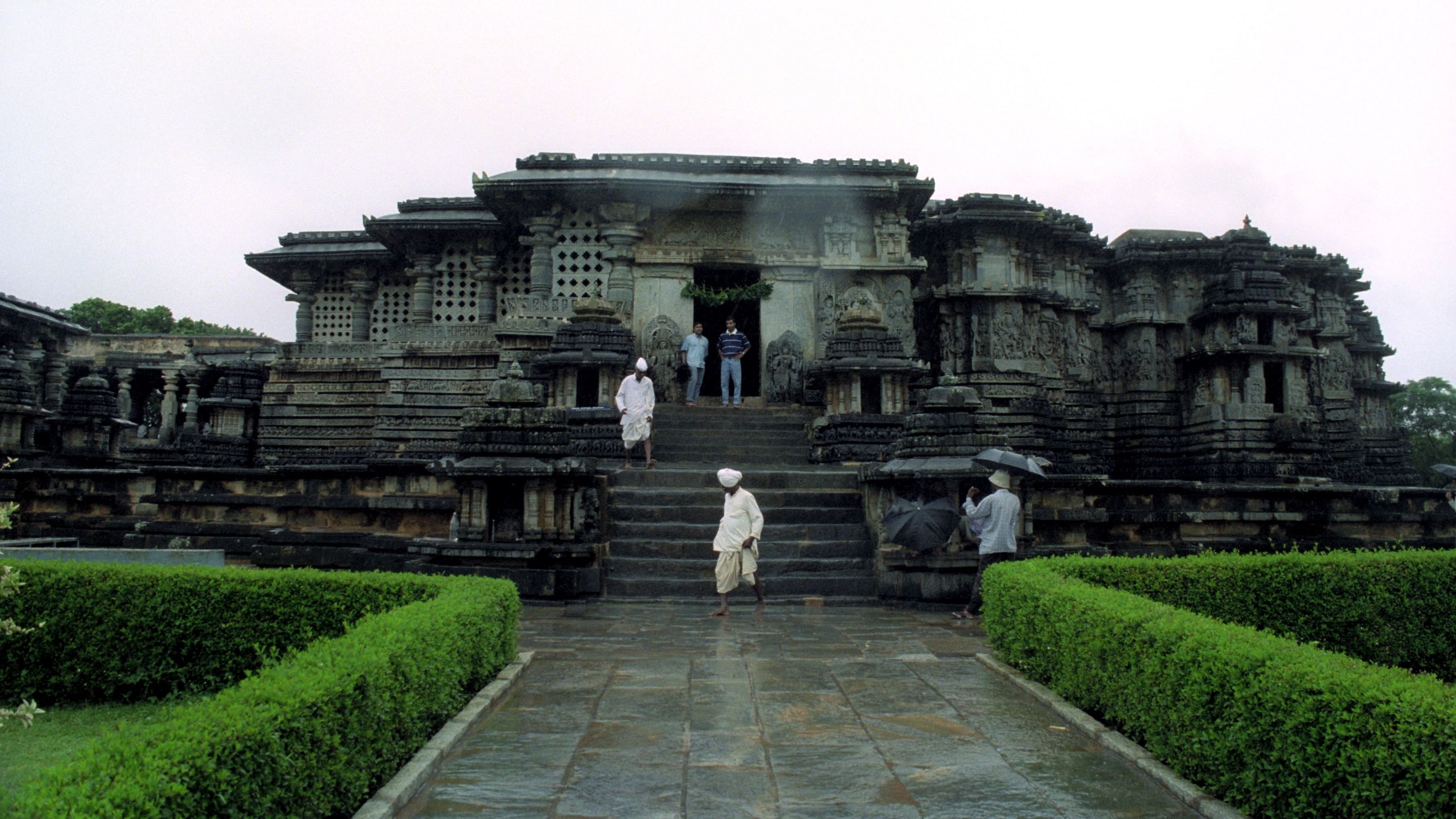
The Channakeshava Temple at Beluru.
Credit: DH Photo
It was Monday night. A small group had gathered in our office in Bengaluru. All eyes were on a large screen that relayed live the proceedings of the 45th session of the World Heritage Committee underway in Riyadh, Saudi Arabia. Pencils were chewed. Fingers drummed impatient tunes.
Finally, just before 7.30 pm, the Committee Chairperson intoned, “The Draft Decision 45 COM 8B.38 is adopted.” And with that, it was done! The Sacred Ensembles of the Hoysalas were added to UNESCO’s list of World Heritage Sites.
The Hoysala World Heritage journey began in 2014 when the Karnataka added the temples at Beluru and Halebeedu to the Tentative List. The second step happened in 2019 — the state government’s Department of Archaeology, Museums and Heritage (DAMH) tasked INTACH, Bengaluru Chapter with preparing the nomination dossier for the Sacred Ensembles of the Hoysalas.
The preparation
Over the next three years, the INTACH team spoke to historians, art historians, urban planners, architects, archaeologists, geologists and sculptors from around the country. We interacted with local stakeholders, bureaucrats and officials from the Archaeological Survey of India and DAMH. And we visited and revisited numerous Hoysala temples — Belavadi, Hosaholalu, Arsikere, Amritapura, Nuggehalli, Mosale and many more — each more jewel-like than the other. We studied their architecture, plans, layouts, patronage, material and sculpture.
Even though we tried to resist the impulse to include all the gorgeous temples, our first shortlist was still 20 temples long. With discussions and feedback, the number was first whittled down to 11, then three: the Channakeshava Temple in Beluru, the Hoysalesvara Temple in Halebeedu and the Keshava Temple in Somanathapura. We decided these three temples met two of UNESCO’s ten possible selection criteria.
Fulfilling criteria
Criterion (i) in the list of selection criteria applies to sites that are ‘masterpieces of human creative genius.’ This exactly captures the work of the Hoysala artists. With unsurpassed technical mastery, Hoysala artists gloried in exploring the limits of intricacy and detail. Beads, fingernails, water, and fish were all carved with consummate ease. Parallelly, they also creatively translated stories into the visual medium of stone, whether it is the life-sized depictions of deities and semi-divine beings or the palm-sized friezes with scenes from the epics. My favourite example is the ingenious depiction of the chakravyuha episode from the Mahabharata. Here, individual figures including soldiers and the young hero Abhimanyu are shown at eye level, but the artist switches to a bird’s eye view to show the maze.
Remarkably, we know the names of many people who worked on these temples all those centuries ago. Visit almost any Hoysala temple and you will see how artists have inscribed their names below many of their creations. The large number of such signed sculptures and the lofty titles and appellations in some of them makes artistic agency a unique attribute of the Hoysala temples.
We know through some of these inscriptions that artists migrated to Hoysala territories from other parts. Additionally, the temples themselves reveal how Hoysala architects were very familiar with modes of temple construction elsewhere in India. Notice, for example, the recurrent use of a decorative motif shaped like a central Indian Bhumija temple spire. Perhaps artists followed traders or armies. Perhaps they had stints elsewhere, moving wherever their work took them.
Hoysala artists built on their familiarity with building traditions elsewhere to synthesise and create new ideas. The outstanding ceilings in Somanathapura, for example, seem influenced by temple ceilings in distant Gujarat and yet are emphatically local. UNESCO’s Criterion (ii) speaks of just such an ‘interchange of human values’ and its influence on architecture and monumental arts.
With all the arguments, criteria and justifications in place, our final dossier was ready.
The final dossier was India’s official submission to UNESCO in January 2022. Over the next 18 months, experts from the International Council on Monuments and Sites (ICOMOS) closely reviewed the dossier, visited the temples and raised some queries which were addressed. They also suggested that in addition to Criteria (i) and (ii), the Hoysala temples were outstanding examples of a period in history and so satisfied Criterion (iv).
And finally, nearly a decade after the journey began, the Sacred Ensembles of the Hoysalas was declared a UNESCO World Heritage Site.
(Meera Iyer is the Convenor of INTACH Bengaluru Chapter and the author of ‘Discovering Bengaluru’.)
The Keshava Temple in Somanathapura.
Credit: Special arrangement
A sculpture on the outer walls of the Hoysalesvara temple in Halebeedu.
Credit: Special arrangement